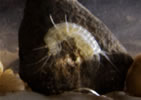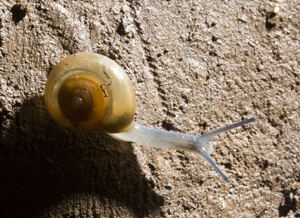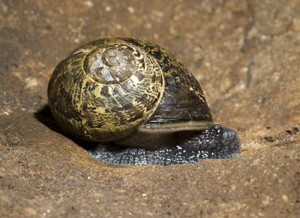 |
Cave Life of Devon |
 |
| |
| HOME |
| INTRODUCTION |
| LIFE IN THE ENTRANCE |
| LIFE IN THE CAVE |
| CONSERVATION |
| GLOSSARY |
| ACKNOWLEDGEMENTS |
| Bacteria |
| Fungi |
| Plants, Algae & Protozoans |
| Flatworms |
| Eelworms & Segmented Worms |
| Slugs & Snails |
| Crustacea |
| Insects |
| Spiders & Millipedes |
| Fish & Amphibians |
| Birds |
| Bats |
| Fossils and archeology |
| |
Mollusca-slugs and snails |
||||
Most of the living molluscs in caves are gastropods and many are omnivores – like man they feed on a variety of food types. Many produce chitinase enzymes to digest the chitin in the exoskeletons of insects e.g. Cellar snail Oxychilus cellarius.
Other species include the Common Door Snail Clausilia bidentata, the Rounded Snail Discus rotundatus and the Common Garden Snail Cornu aspersum (aka Cryptomphalus aspersus, previously Helix aspersa), along with several other species, all of which are generally found in the threshold zone. The Great Grey Slug Limax maximus has been recorded from Napp’s Cave near Ifracombe.
|

